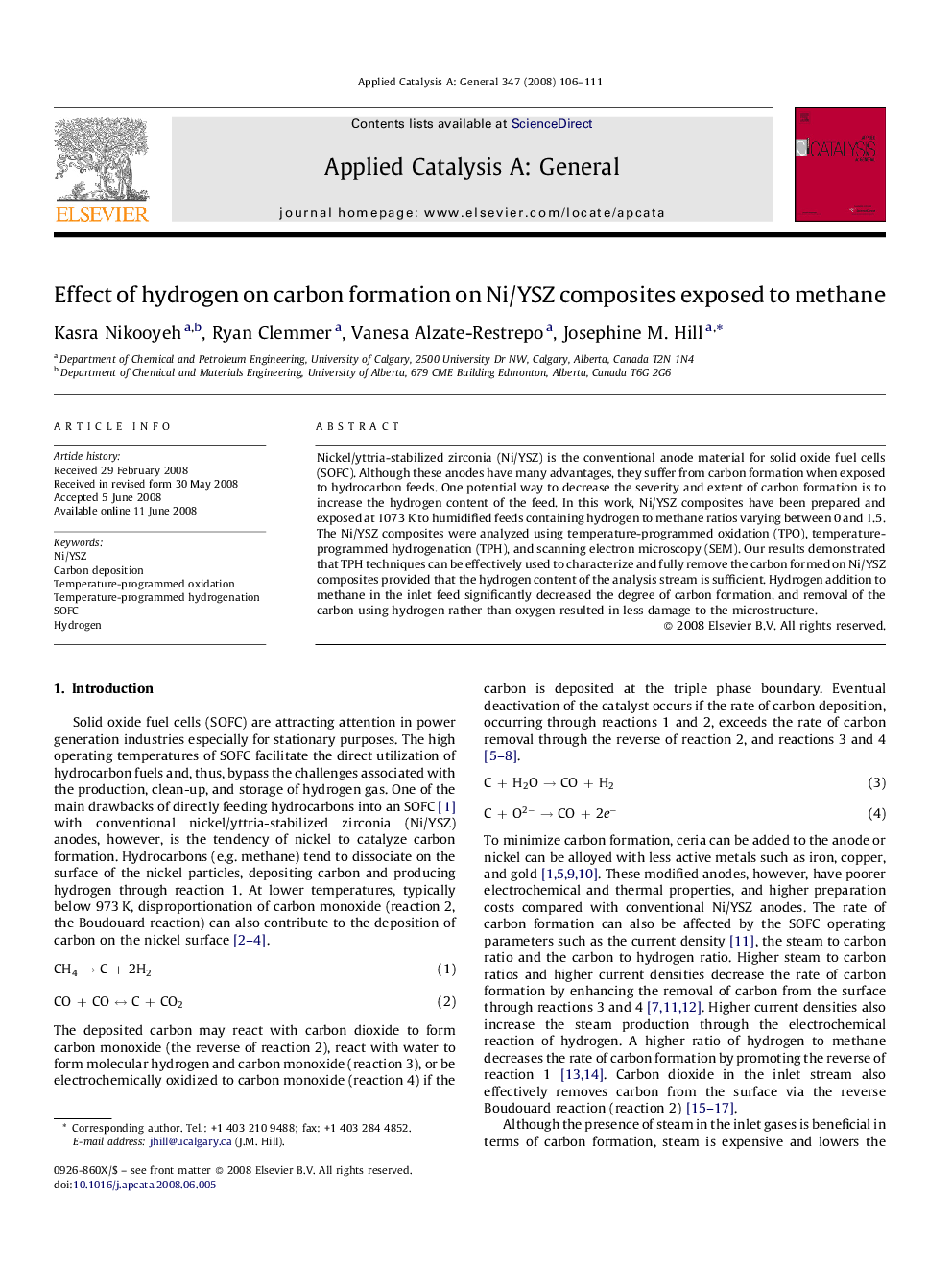| Article ID | Journal | Published Year | Pages | File Type |
|---|---|---|---|---|
| 42899 | Applied Catalysis A: General | 2008 | 6 Pages |
Nickel/yttria-stabilized zirconia (Ni/YSZ) is the conventional anode material for solid oxide fuel cells (SOFC). Although these anodes have many advantages, they suffer from carbon formation when exposed to hydrocarbon feeds. One potential way to decrease the severity and extent of carbon formation is to increase the hydrogen content of the feed. In this work, Ni/YSZ composites have been prepared and exposed at 1073 K to humidified feeds containing hydrogen to methane ratios varying between 0 and 1.5. The Ni/YSZ composites were analyzed using temperature-programmed oxidation (TPO), temperature-programmed hydrogenation (TPH), and scanning electron microscopy (SEM). Our results demonstrated that TPH techniques can be effectively used to characterize and fully remove the carbon formed on Ni/YSZ composites provided that the hydrogen content of the analysis stream is sufficient. Hydrogen addition to methane in the inlet feed significantly decreased the degree of carbon formation, and removal of the carbon using hydrogen rather than oxygen resulted in less damage to the microstructure.
Graphical abstractThe carbon deposits formed on Ni/YSZ exposed at 1073 K to humidified feeds containing H2:CH4 ratios between 0 and 1.5 were examined using temperature-programmed oxidation, temperature-programmed hydrogenation, and scanning electron microscopy. The carbon can be fully removed using hydrogen provided that the hydrogen concentration is sufficient. Reaction and regeneration with hydrogen results in the least damage to the Ni/YSZ microstructure. Figure optionsDownload full-size imageDownload as PowerPoint slide
